A new leader rises in imports: masks
Published on 21 May 2020
The spread of the coronavirus has led to an increase in the supply of protective masks. The details of the amounts and changes in origin are striking.
The declaration of the coronavirus as a pandemic by the World Health Organization occurred on March 11. Although the disease had already devastated the health system of Wuhan and other cities in China, and the disease had already begun to spread uncontrollably within Italy and Spain, no action was taken on the American continent until then, when Cases of contagion were known in their countries and possible massive dissemination of the virus was expected.
The numbers of infections and deaths are not the only striking indicators of the response to the disease: the use of protective masks is also a sample of the way in which public policies adapted to the problem generated, given that Initial recommendations by specialists ruled out their effectiveness.
However, everything changed from the second week of March, and the import figures for masks demonstrate this. In the following tables, two interesting patterns can be observed in the cases of Colombia, Ecuador, and Peru: the evident jump in the value of the merchandise introduced, and the change in the distribution of the origins.
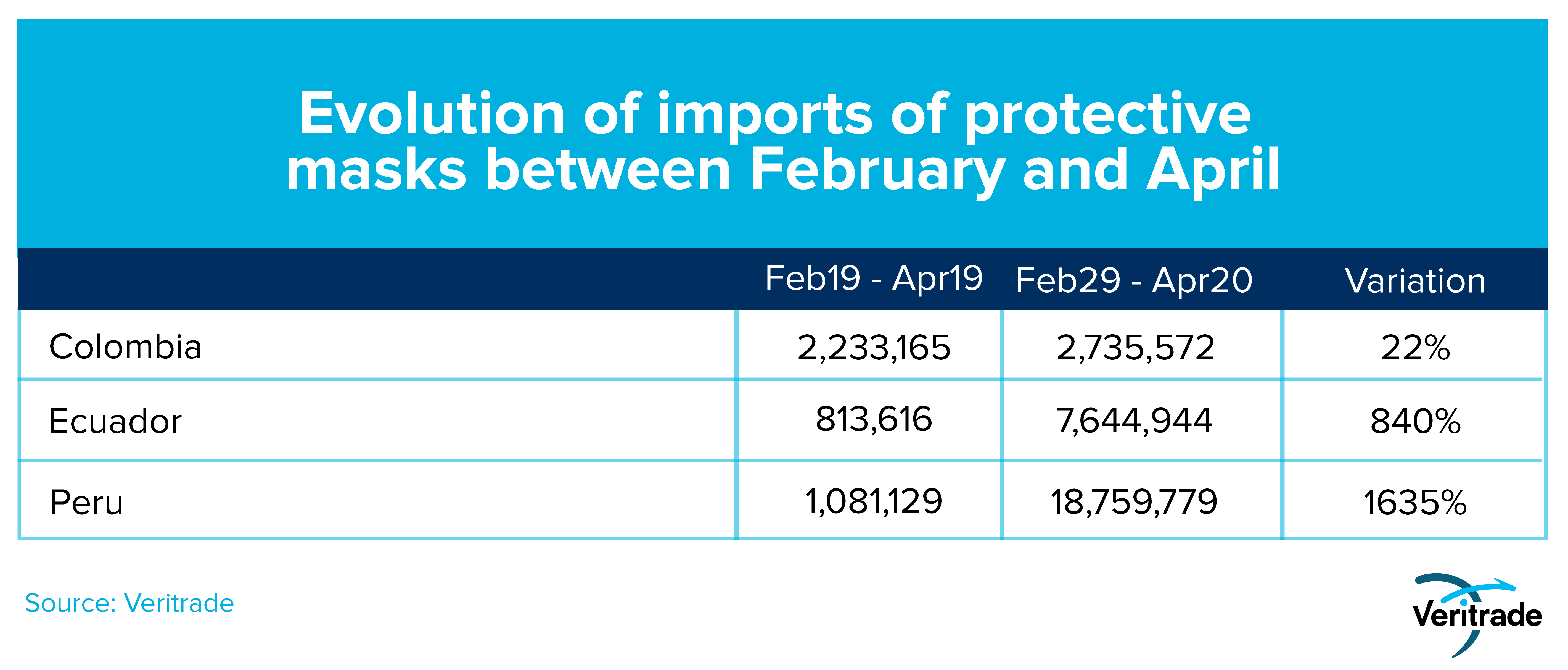
The first outstanding detail is the increase in the value of imports, which can be up to 16 times in the case of Peru. Precisely, this and Ecuador have been two of the most affected, along with Brazil. In the case of the first, the lack of control of the disease in the main cities, especially Guayaquil, has been particularly devastating; while in the case of Peru, the advance of the virus has been persistent and the phase of expansion to remote places has had harsh aftermath. The shortage generated by this impact has led to an increase in the price of masks so that suppliers have been supplied with high quantities to meet growing demand.
In terms of origin, it is interesting to note that emergency purchases have been made mainly from Chinese suppliers. This could be due to both the lower price and the greater quantity produced, as well as the shortage of masks made in the United States, due to the commitments with large global buyers that ended up depleting the stocks.
In the following tables, which demonstrate the evolution of the main origins of mask imports, it can be seen how until January, when the market performed under conventional conditions, the United States was the main origin. Indeed, China may be more of an emergency source than a preferred one.
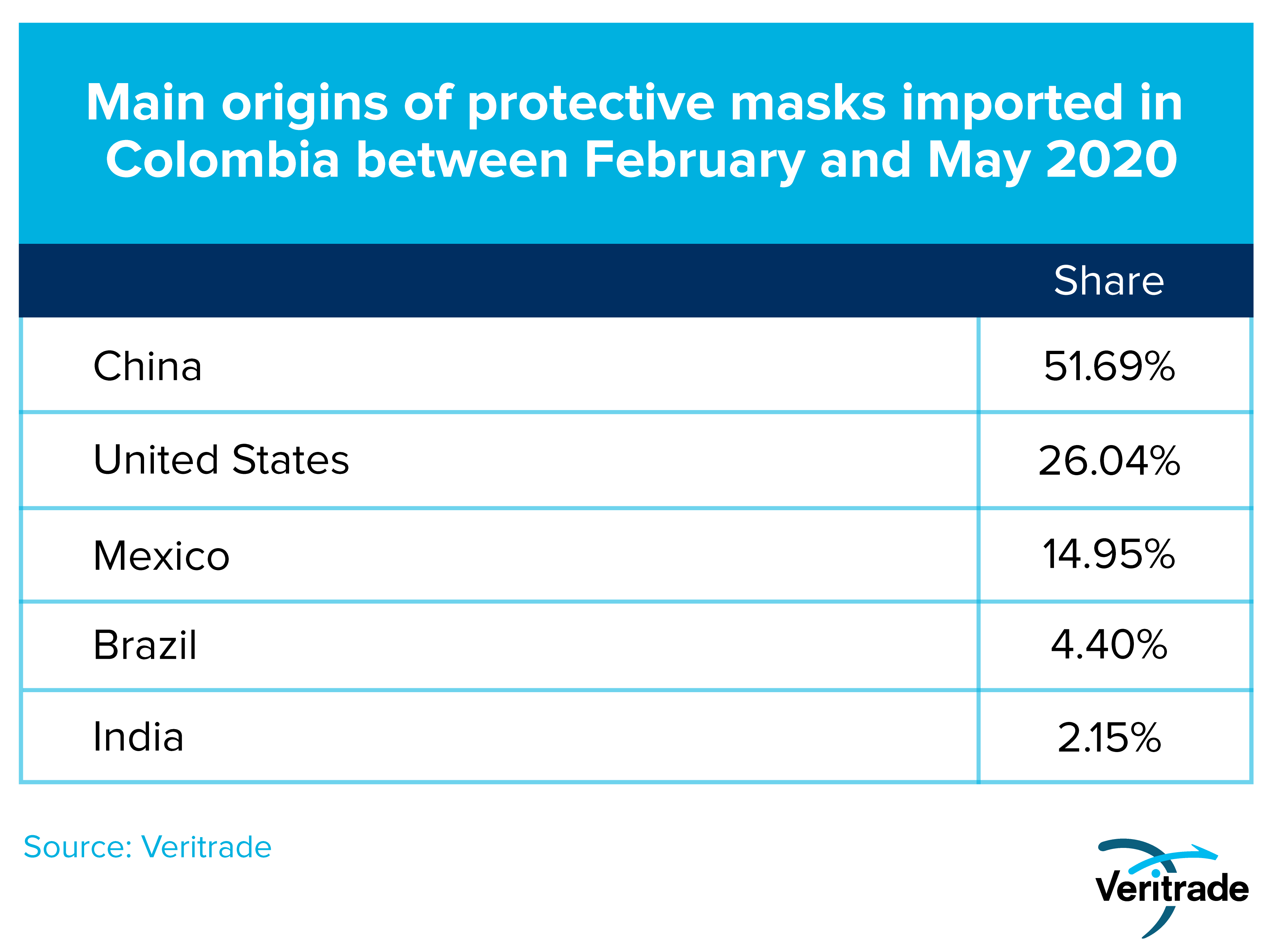
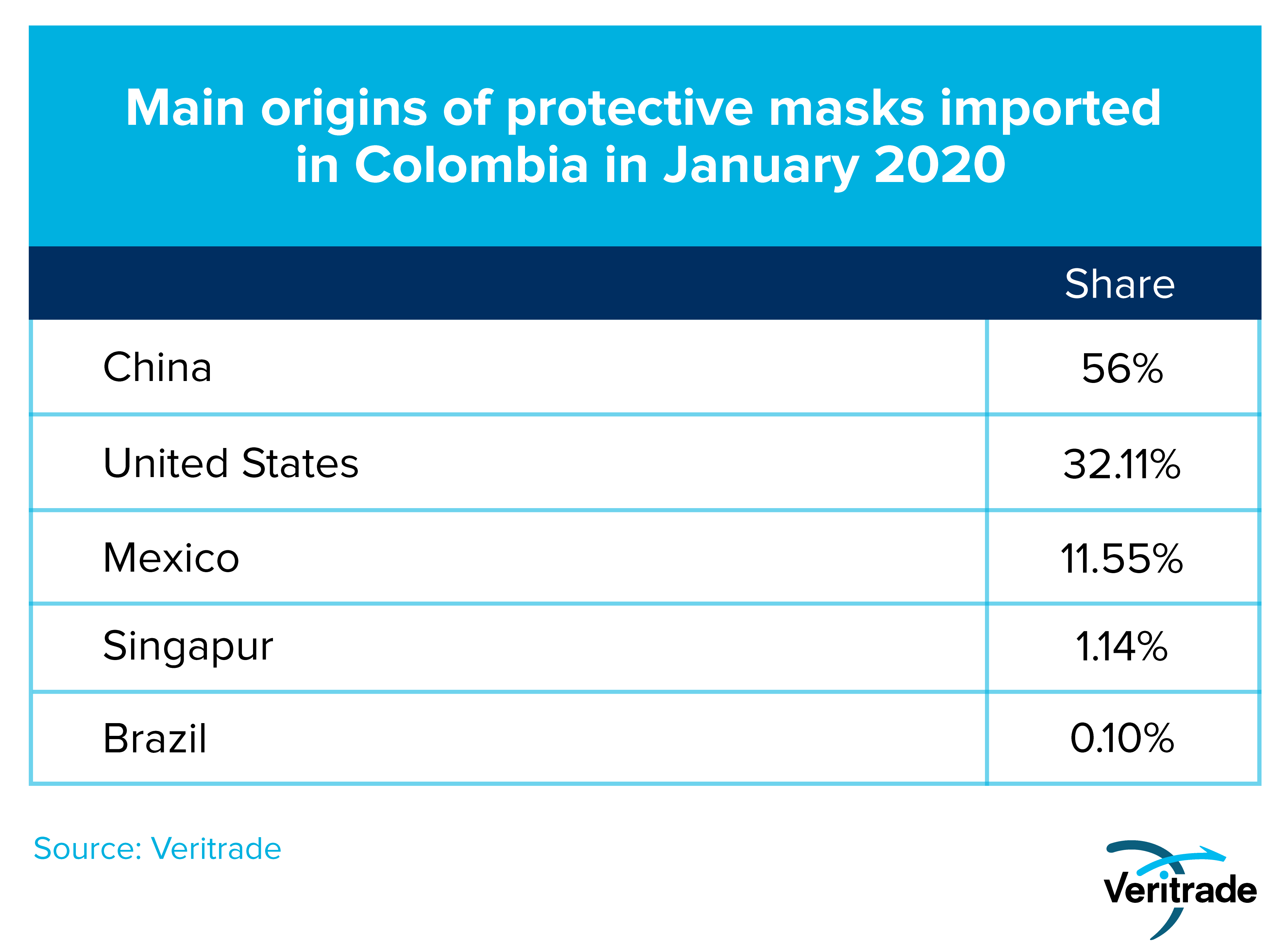
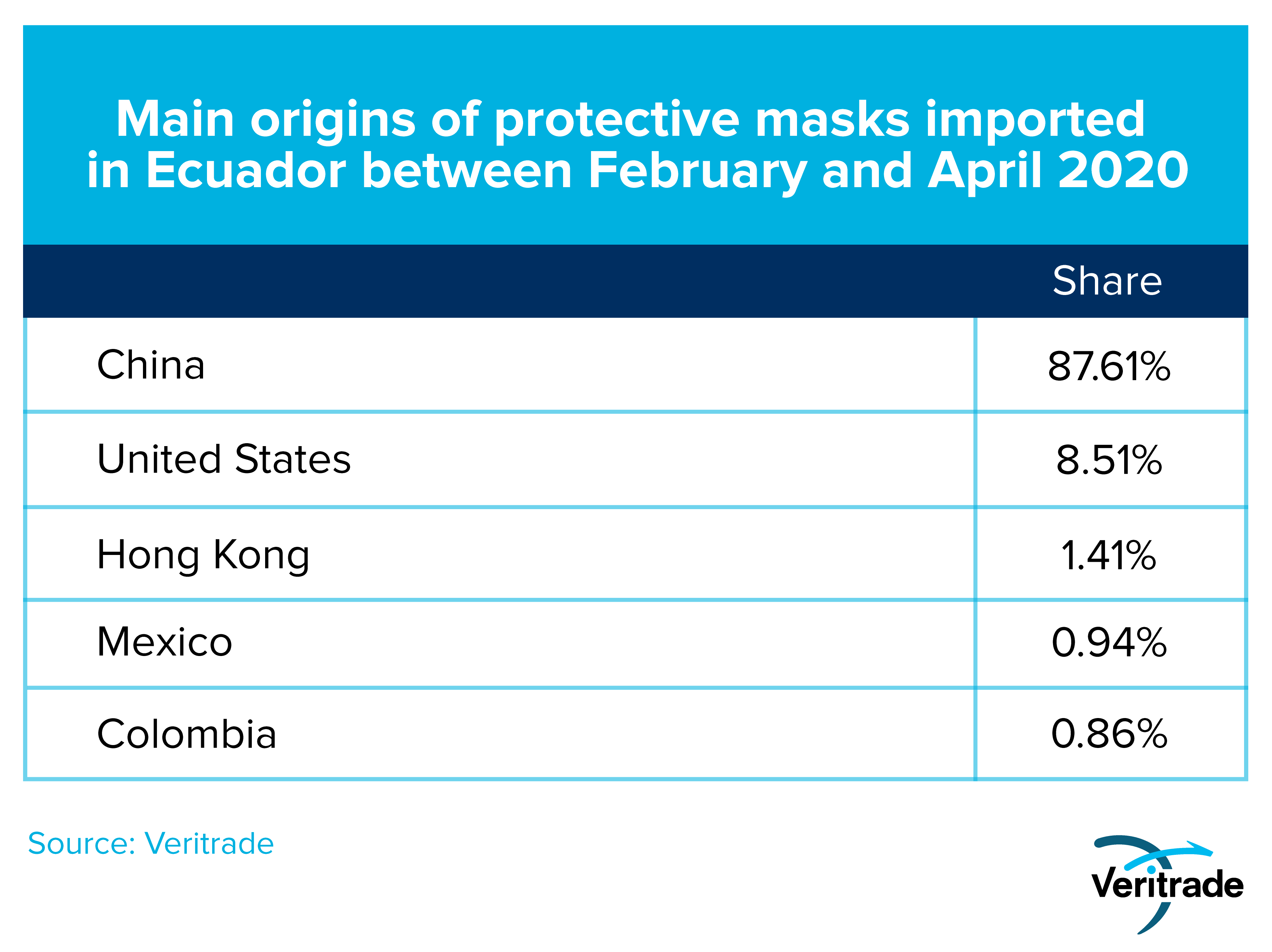
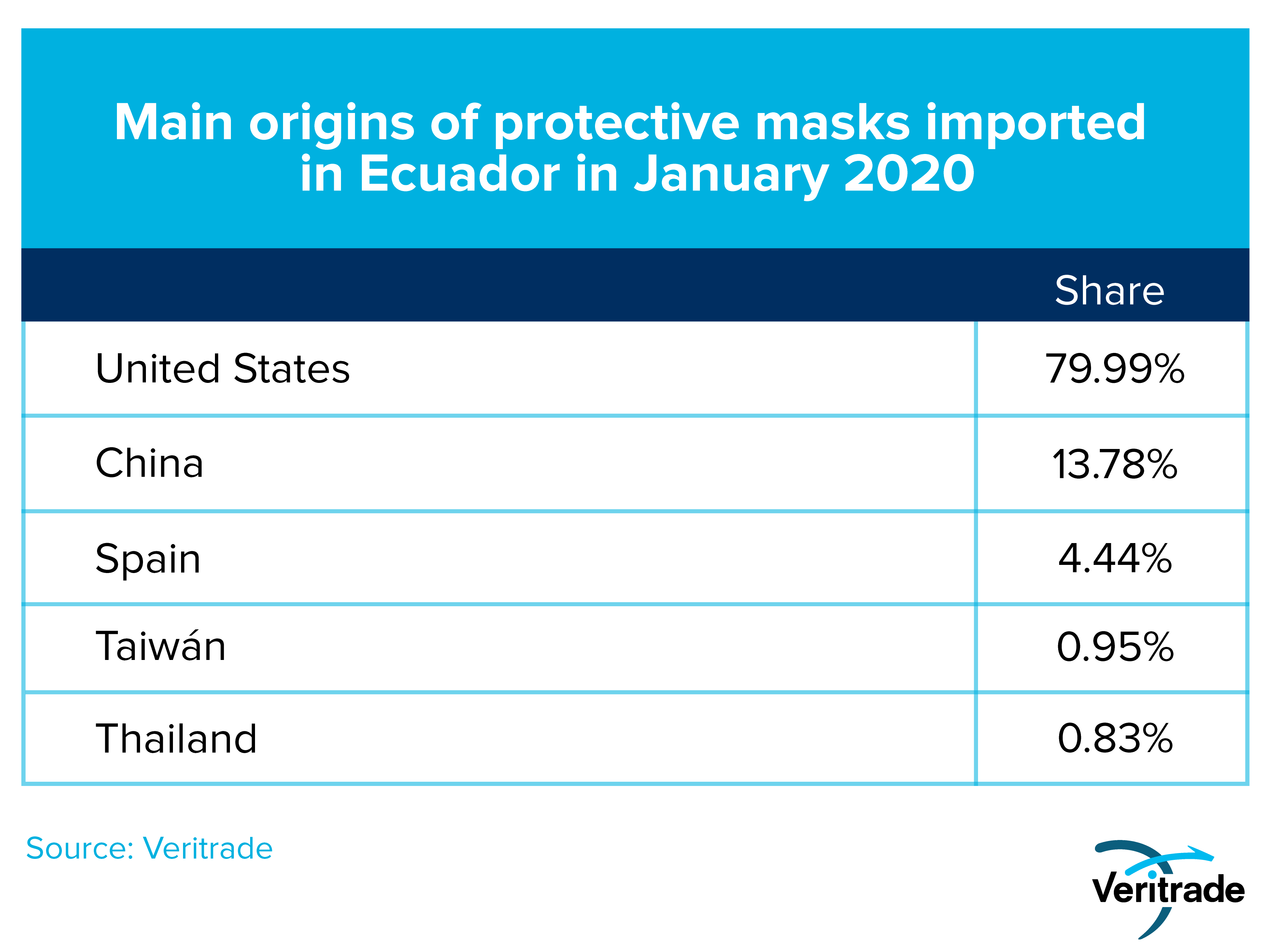
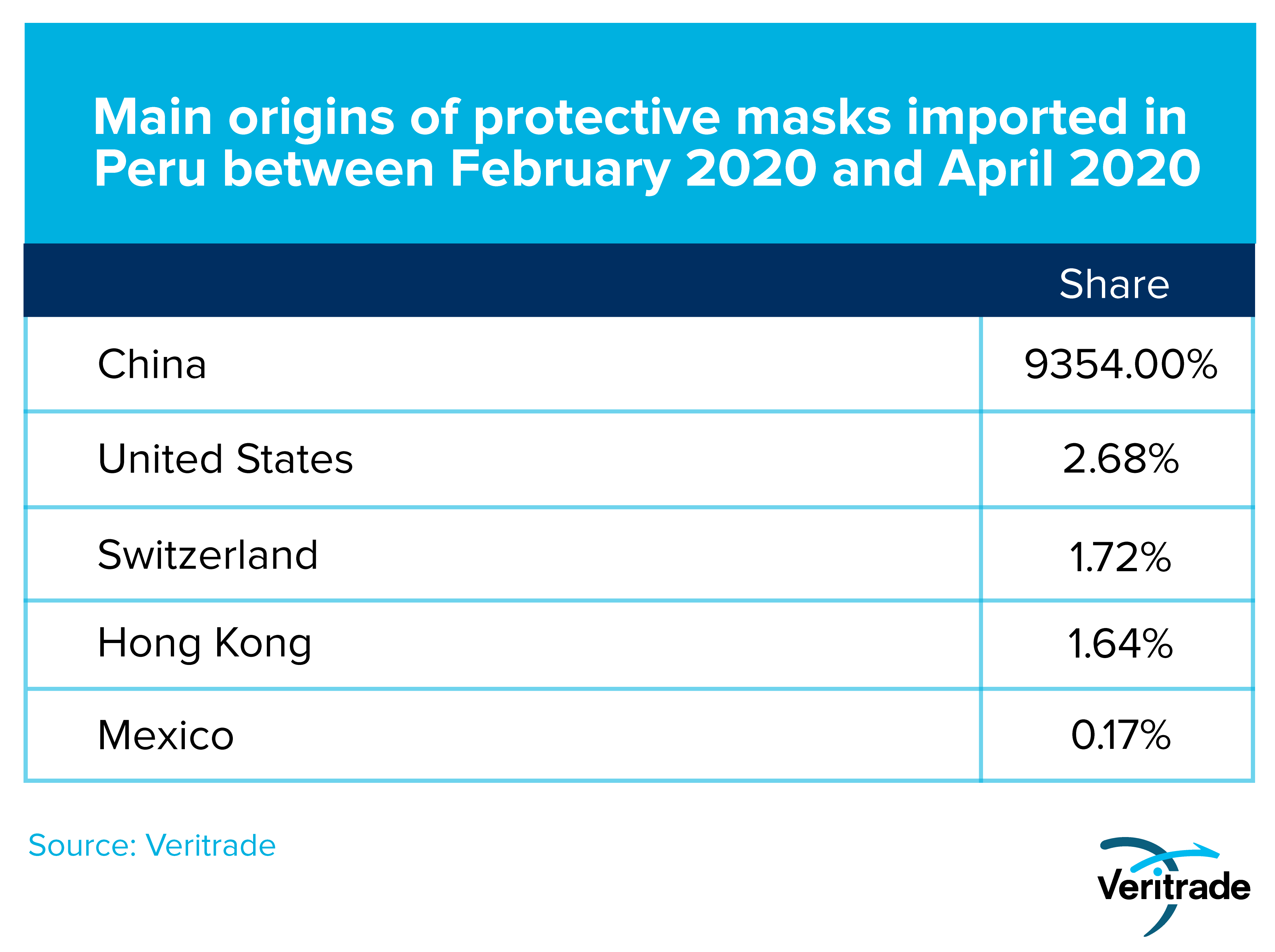
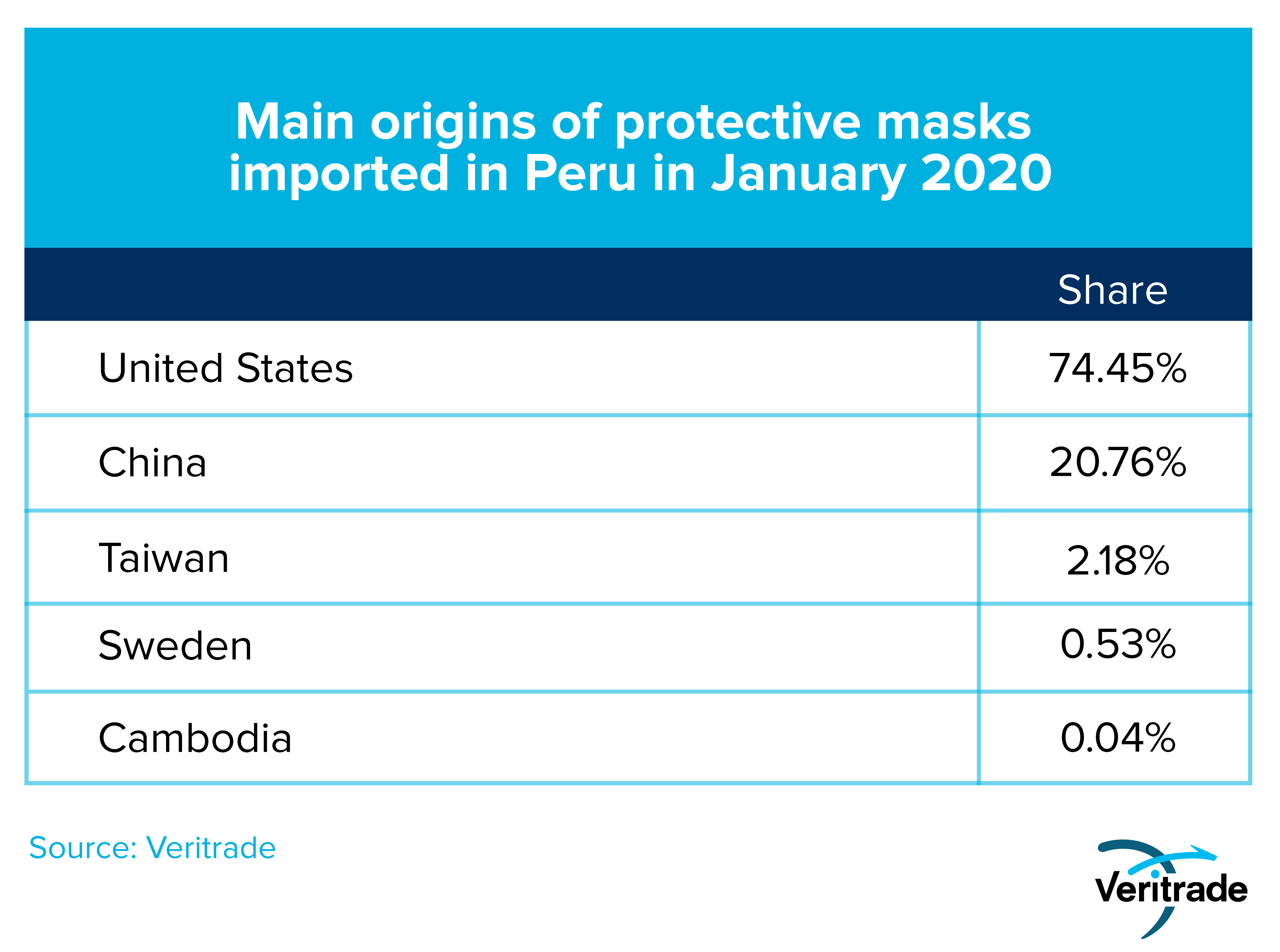
It should be noted that until January, the import of masks had not registered a jump. In Colombia, these had risen only to US $ 754,626 from US $ 751,933 in the same month last year. In Ecuador, the figure had gone from US $ 291,833 to US $ 304,157, and in Peru the number had even dropped from US $ 799,546 to US $ 525,561.
It is expected that the value of imports of this product will remain high during May, June and even July, depending on the duration of the recommendations for spacing, care of contact with surfaces, and prevention of contamination of objects if it is not used a cover for the oral and nasal areas.
In general, bringing masks to the market at a fair price is a sure way to generate sustainable income, offering a necessary product for society. Finding a supplier and identifying the appropriate channels to place stocks, generating competition at a time when demand is high, but supply is limited and generates overvaluation and even speculation.
For more information on imports of health care products and personal protective equipment, you can access the Veritrade portal.
Request your free trial by going to https://bit.ly/2A3dsPa